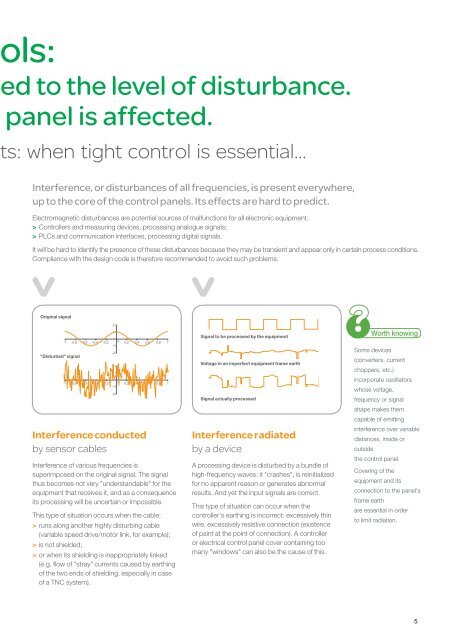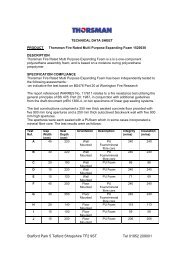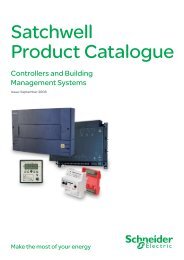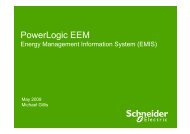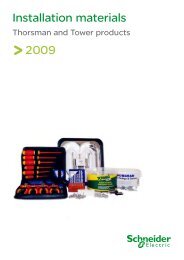Control Panel technical guide How to protect a - Schneider Electric
Control Panel technical guide How to protect a - Schneider Electric
Control Panel technical guide How to protect a - Schneider Electric
Create successful ePaper yourself
Turn your PDF publications into a flip-book with our unique Google optimized e-Paper software.
ls:<br />
ed <strong>to</strong> the level of disturbance.<br />
panel is affected.<br />
ts: when tight control is essential…<br />
Interference, or disturbances of all frequencies, is present everywhere,<br />
up <strong>to</strong> the core of the control panels. Its effects are hard <strong>to</strong> predict.<br />
Electromagnetic disturbances are potential sources of malfunctions for all electronic equipment:<br />
> <strong>Control</strong>lers and measuring devices, processing analogue signals;<br />
> PLCs and communication interfaces, processing digital signals.<br />
It will be hard <strong>to</strong> identify the presence of these disturbances because they may be transient and appear only in certain process conditions.<br />
Compliance with the design code is therefore recommended <strong>to</strong> avoid such problems.<br />
Original signal<br />
"Disturbed" signal<br />
-1 -0,8 -0,6 -0,4 -0,2 0 0,2 0,4 0,6 0,8 1<br />
-1<br />
Interference conducted<br />
by sensor cables<br />
Interference of various frequencies is<br />
superimposed on the original signal. The signal<br />
thus becomes not very "understandable" for the<br />
equipment that receives it, and as a consequence<br />
its processing will be uncertain or impossible.<br />
This type of situation occurs when the cable:<br />
> runs along another highly disturbing cable<br />
(variable speed drive/mo<strong>to</strong>r link, for example);<br />
> is not shielded;<br />
> or when its shielding is inappropriately linked<br />
(e.g. flow of "stray" currents caused by earthing<br />
of the two ends of shielding, especially in case<br />
of a TNC system).<br />
2<br />
1<br />
-2<br />
2<br />
1<br />
-1 -0,8 -0,6 -0,4 -0,2 0 0,2 0,4 0,6 0,8 1<br />
-1<br />
-2<br />
Signal <strong>to</strong> be processed by the equipment<br />
Voltage in an imperfect equipment frame earth<br />
Signal actually processed<br />
Interference radiated<br />
by a device<br />
A processing device is disturbed by a bundle of<br />
high-frequency waves: it "crashes", is reinitialized<br />
for no apparent reason or generates abnormal<br />
results. And yet the input signals are correct.<br />
This type of situation can occur when the<br />
controller's earthing is incorrect: excessively thin<br />
wire, excessively resistive connection (existence<br />
of paint at the point of connection). A controller<br />
or electrical control panel cover containing <strong>to</strong>o<br />
many "windows" can also be the cause of this.<br />
Worth knowing<br />
Some devices<br />
(converters, current<br />
choppers, etc.)<br />
incorporate oscilla<strong>to</strong>rs<br />
whose voltage,<br />
frequency or signal<br />
shape makes them<br />
capable of emitting<br />
interference over variable<br />
distances, inside or<br />
outside<br />
the control panel.<br />
Covering of the<br />
equipment and its<br />
connection <strong>to</strong> the panel's<br />
frame earth<br />
are essential in order<br />
<strong>to</strong> limit radiation.<br />
5


